* (restored/expanded)
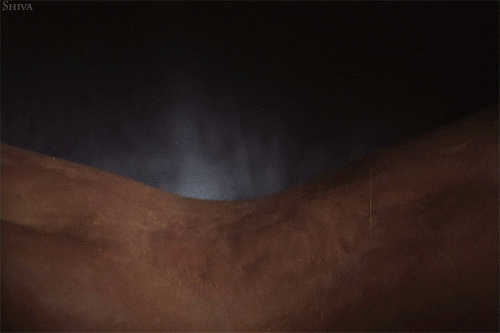
‘Mario Bava directed (or co-directed) twenty-four features during an eighteen year period, 1960 to 1978. His œuvre consists entirely of the formula films (filone) which made Italy the most successful production centre in Western Europe in the ’60s. These less-than-reputable genre films were shot with minuscule budgets and production schedules – a typical filone had a budget under $80,000 and a shooting schedule of three or four weeks – and were often co-financed to further reduce costs (this is why most of the spaghetti westerns were shot in Spain, with largely Spanish crews). Bava is best known for his horror films and giallo thrillers (to which I will turn shortly), but he worked in all of the popular genres of his day: spaghetti westerns, peplum/sword-and-sandal epics, Bond-style spy thrillers, even soft-porn Mondo Cane/World by Night romps. If Bava manages, more often than not, to transcend the limitations of his material it is because of the strength of his imagery, as well as the evident pleasure he derives from exploring the expressive potential of the medium itself: the ability of film to generate a variety of emotions – most of all, wonder and fear.
‘“Movies,” Bava once explained, “are a magician’s forge, they allow you to build a story with your hands… at least, that’s what it means to me. What attracts me in movies is to be presented with a problem and be able to solve it. Nothing else; just to create an illusion, and effect, with almost nothing”. His apprenticeship in cinematic magic began quite early. His father, Eugenio Bava, was also – as Tim Lucas puts it – “the father of special effects photography in Italy”. Eugenio Bava began working at the Italian branch of Pathé Frères in 1906. (In the years leading up to the Great War, Pathé Frères was the most successful film company in the world). His credits include cameraman for Quo Vadis (Enrico Guazzoni, 1913) and Cenere (1916) with Eleanora Duse. He also worked with Segundo de Chomon on the special effects for Pastrone’s Cabiria (1914) and later became the head of the optical effects department at the government-sponsored (i.e. Fascist-sponsored) Instituto LUCE. Mario Bava, after serving as an assistant to his father, became a camera operator and cinematographer. Among his earliest works as Director of Photography (DP) were two shorts by Roberto Rossellini: Il tacchino prepotente and La vispa Teresa (both 1940). Bava spent the next twenty years refining his craft, serving as a cinematographer on nearly thirty features before directing his first film Black Sunday (La Maschera del demonio, 1960), at the age of forty-six.
‘His subsequent career could be understood as a continuation by other means of his work as cinematographer, for it is clear that Bava’s approach to filmmaking is primarily cinematographic. Henri Alekan, the great French DP, once said that the cinematographer’s task was “to obtain psychological reactions out of mere technical means” and this is a good, basic description of Bava’s style. When Andrew Mangravite says that Blood and Black Lace (Sei donne per l’assassino, 1964), one of Bava’s best films, is “a thriller ‘about’ shadowy rooms, and the terrors of nightfall” he does not exaggerate. Bava’s films are primarily about the affective qualities of light and shade, of colour and movement. He is credited as his own cinematographer on eight of his twenty-five features, but even when he did not officially shoot his films Bava took an active role in the design of each image: setting up the lights, taking charge of the little red wagon which served as his makeshift dolly, creating optical effects with glass mattes, etc.
‘The artisanal nature of Bava’s filmmaking extends to story construction as well, for the haphazard nature of film production in Italy gave Bava substantial freedom to rework scripts as he saw fit. He was known to change as much as sixty percent of the material while in production and even postproduction. (This was not a problem, dialogue-wise, since Italian films were typically postsynchronised.) The writing credit given to film editor Mario Serandrei on Black Sunday, as Lucas suggests, is more than likely an acknowledgement of the contribution that Serandrei made to the story after it was shot. If you ever complained, while watching an Italian genre film, that the plot “seems to have been made up on the spot,” this, in fact, is not far from the truth. There is a playful allusion to this in Lisa and the Devil (Lisa e il diavolo, 1972) when Sophia, one of the characters stranded in an old family mansion, observes, “The entire setting is so right for a tall tale of gloom and perdition. Why, we can make one up as we go along.”
‘Bava’s directorial career can be roughly divided into two periods. During his first six years as a filmmaker, Bava directed over a dozen films and it is during this initial burst of activity that he made many of his best films. 1966 was a year marked by personal and professional misfortune: the death of his beloved father; the death of Mario Serendrei, his film editor (who also worked with Luchino Visconti); the end of Bava’s collaboration with cameraman Ubaldo Terzano, who began working as Bava’s camera operator in the early 1950s and became his director of photography with Black Sabbath. Although his title was believed to be purely nominal (since Bava took on most of the responsibilities associated with a DP), there is a striking difference between the works Bava made with Terzano and the ones he made, beginning in 1965, with Antonio Rinaldi and others. The Bava-Terzano films are distinguished by the remarkable motility of the camera, even more remarkable when you consider that, with the exception of Black Sunday, they never had the budget to rent professional cranes and dollies.
‘Look, for example, at the intricate use of camera movement during the opening minutes of “The Telephone”. There are multiple long takes here in which the camera executes five or six movements within a single shot. What Bava and Terzano convey so vividly with these movements – as well as the use of several startling 180º reverse cuts – is the terror of being “exposed” in one’s own home. The continuous variation of angles and points-of-view remind us that, even within the interior of one’s abode, there is always some other corner to explore, some other perspective yet unknown. In Blood and Black Lace, the camera laterally tracks back and forth across the dressing rooms of Christiana Haute Couture allowing us to view, in a continuous take, a series of models (and future victims) in various states of dress and emotional distress. These movements allow us to experience firsthand the turbulence into which these characters’ lives swiftly descend.
‘After the termination of the Bava-Terzano partnership, Bava’s films become increasingly more static. (Considering his background as cinematographer it is not surprising that the division in Bava’s œuvre would express itself, first and foremost, in visual terms.) The physical, sensual qualities of the tracking shot are replaced by the faux-movement of the zoom lens. Of course, the zoom lens can produce its own thematic resonance and one effect which particularly appeals to Bava is the way a zoom-in flattens space, momentarily abstracting the characters from their surroundings, like cut-out figures, so that we see them both within a specific milieu as well as abstracted from it. But whereas the use of the zoom lens in a film like Hatchet for the Honeymoon (Il rosso segno della follia, 1968) has a sense of experimentation about it – Bava researching its expressive potential – the overuse of zoom shots in the works to follow signal (or seem to signal) the director’s indifference to the material at hand. (The more static nature of Bava’s later works, I might add, is not as evident in the first Bava-Rinaldi collaborations, such as the wonderful sci-fi horror film Planet of the Vampires or Kill, Baby, Kill! [Operazione paura, 1966], whose most dazzling sequence involves a young girl drawn to a metal protuberance like a moth to the flame, her “attraction” communicated by the complex movements of the camera).
‘What differentiates the two periods as well is the use of colour. The early colour works were shot or processed in Technicolor. The later were made using inferior colour film processes. The vibrant, saturated colours which give such Bava films as Hercules in the Haunted World and Whip and the Body a hallucinatory beauty gives way in the later works to poor contrast and pallid colours, as though the world itself had become impoverished, had lost its allure – its threat. (The increased emphasis on location shooting will also restrict Bava’s use of expressive lighting effects.)
‘Bava would experience the adversities of commercial filmmaking in Italy with growing intimacy. Somehow, as his body of work expanded, the scripts became increasingly more threadbare, the budgets and production circumstances more precarious. Bava and the cast of Kill, Baby, Kill! agreed to complete the film gratis after the producers ran out of money two weeks into production. (Despite this, it is a wonderful mood piece. At the premiere, it is said that Visconti gave the film a standing ovation.) Bava agreed to step-in and salvage the Viking film Knives of the Avenger (I coltelli del vendicatore, 1966) by reworking the script and reshooting almost the entire film in six days. Bava began shooting Five Dolls for an August Moon forty-eight hours after signing a contract to make the film. He then agreed, in postproduction, to edit the movie himself because the producers had no money left to hire a film editor.
‘These mishaps would continue to the end. Unable to secure a distributor, the producer Alfred Leone (under the pseudonym Mickey Lion) shot new footage and transformed Lisa and the Devil into an Exorcist knock-off entitled House of Exorcism (La casa dell’esorcismo, 1975) (14). To add insult to injury, Bava’s last theatrical release Shock (All 33 di Via Orologio fa sempre freddo, 1977) was marketed in the US as a sequel to another Exorcist retread, Ovidio G. Assonitis’s Beyond the Door (1975). Worse, though, was the fate of Rabid Dogs. The producer declared bankruptcy while the film was in the final stages of production and his property (including the workprint of Rabid Dogs) was seized and impounded. It would not see the light of day for twenty-three years (seventeen years too late for Bava, who died in 1980).
‘Yet, despite these professional difficulties, Bava’s final trio of films can now be seen for what they are: a marvellous return to form. Lisa and the Devil was Bava’s reward, by producer Leone, for the commercial success of Baron Blood (Gli orrori del castello di Norimberga, 1972) and it is his most daring film, an oneiric narrative with tender volleys of absurdist humour. As Lucas writes, it is “an extraordinary combination of horror film, art film and personal testament. Based on Bava’s memories of growing up among his father’s sculptures, dialogue borrowed from Dostoevski’s I Diavoli, and an unrealized project about real-life necrophile Viktor Ardisson, Lise e il diavolo unfolds like a waking dream”. Although it doesn’t quite sustain the invention and charm of the opening hour, Lisa and the Devil is clearly a labour of love, a beautifully crafted puzzle box replete with secret compartments.
‘Shot on location with little or no artificial lighting and set for almost its entirety in a moving car there is nothing dream-like about Rabid Dogs. Three robbers on the run from the police with three hostages: a man, a woman and a child. That’s it. It is as brutally precise as any film Bava has ever made. The film starts at a fevered pitch (a robbery gone awry) and never lets up. Rabid Dogs consists primarily of a series of remarkable close-ups of the human face in crisis. No matter what emotion is expressed – joy or terror – the one quality which unites all these human countenances is their nakedness. Bava’s study of the human face is a perverse variation on the “symphony of faces” found in Carl Dreyer’s Passion of Joan of Arc (1928). Whereas the face in Dreyer is both flesh and spirit (made of flesh, but turned toward the spiritual), the face in Bava is nothing but flesh, pure and simple.
‘Working with a script written by his son Lamberto Bava, in collaboration with Francesco Barbieri, Paola Briganti and Dardano Sacchetti, Shock has a gravitas missing from Bava’s middle-period films. The flippant tone of such works as Bay of Blood (Ecologia del delitto or Reazione a catena, 1971) is replaced here by a real sense of pain and anguish. The house that the heroine returns to live in with her family is haunted through and through. The denouement is a worthy finale to Bava’s film career: a mother, pushed to the brink of madness and despair, slits her throat in the basement of her house while, outside, her little son “plays” with the ghost of his father (he serves imaginary tea to a man who isn’t there). Earlier in the film the mother explained to her son that “Death is a part of life, and we must learn from it”, but even she could not have realised what these words would come to mean – for her son or for the viewer.
‘In his final series of works, Bava manages to reaffirm his belief in the alchemic properties of film, its ability to convert “almost nothing” into images of terror and beauty.
‘The cinema is a magician’s forge and Mario Bava is one of its master sorcerers.’ — Sam Ishii-Gonzales, Senses of Cinema
____
Stills
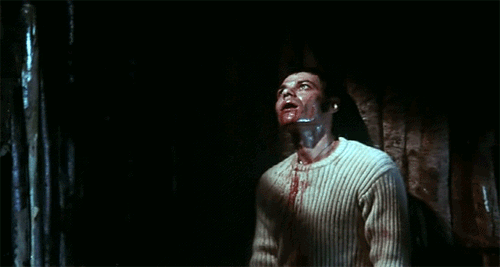
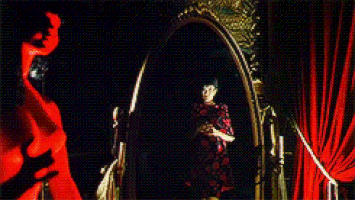


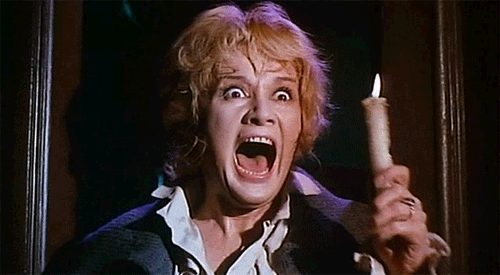
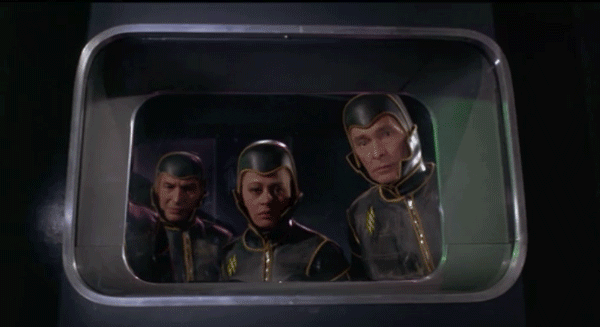

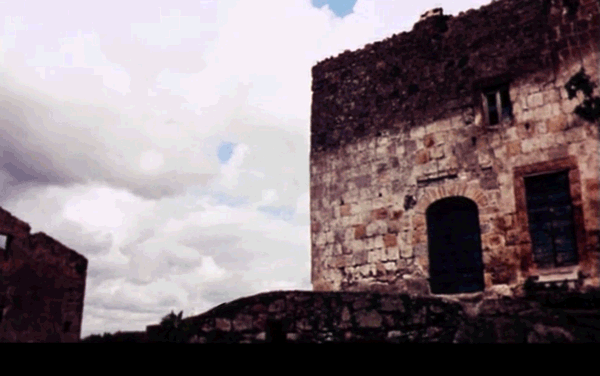
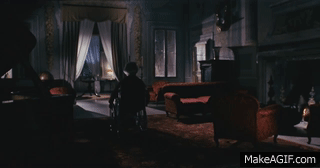

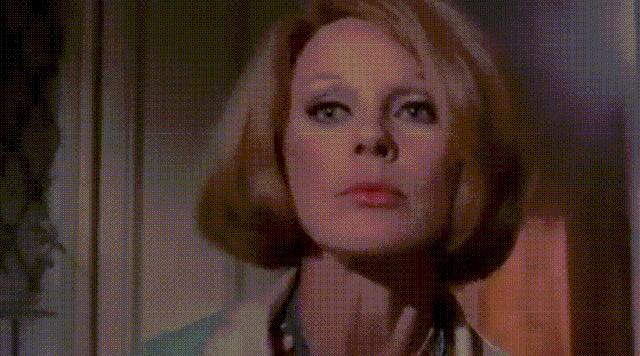
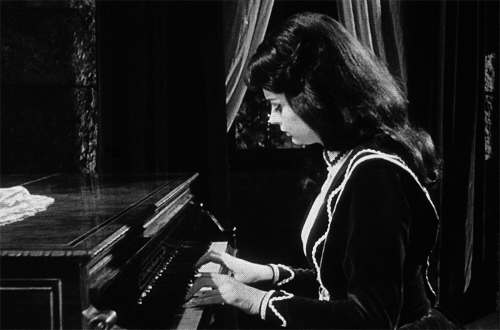

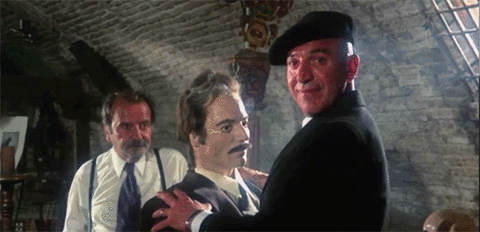
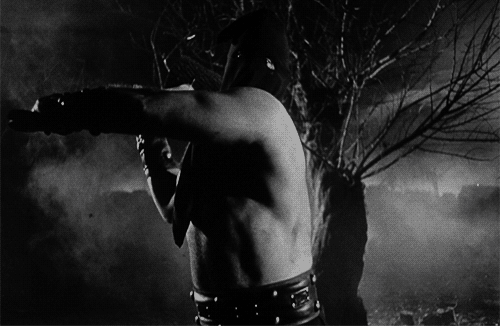
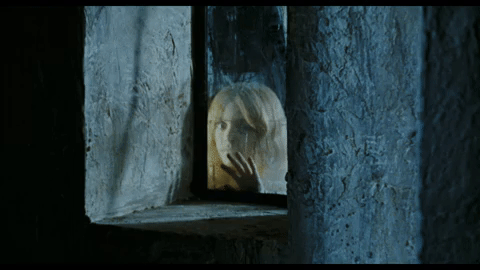
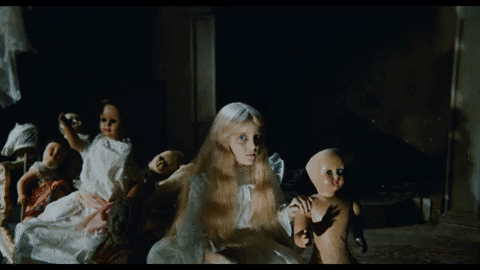
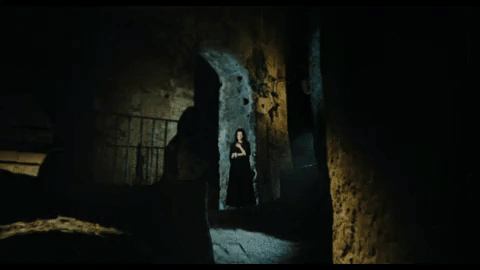
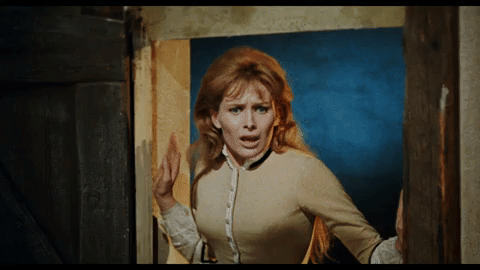
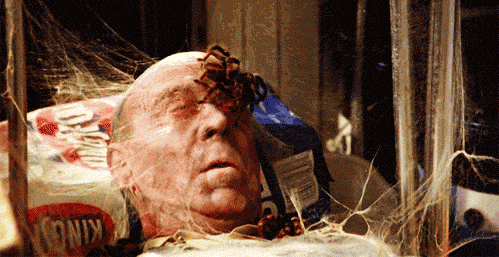
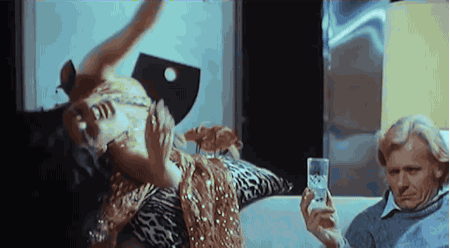

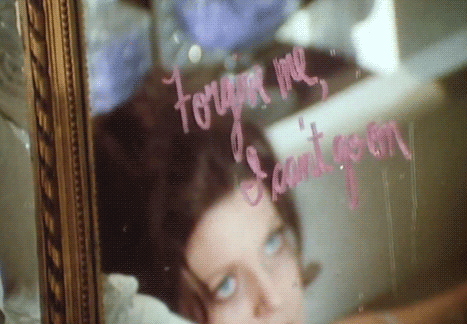
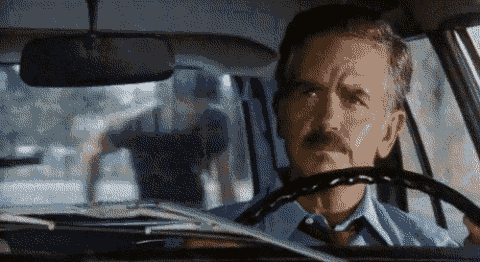
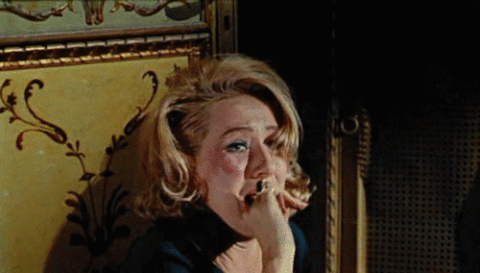

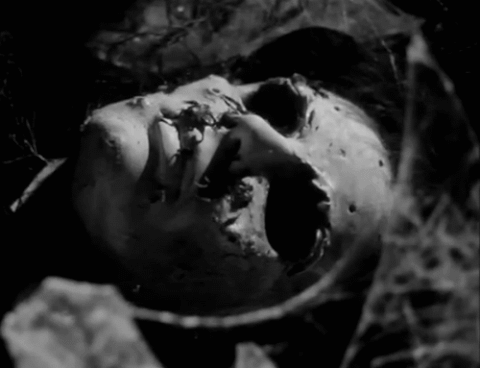
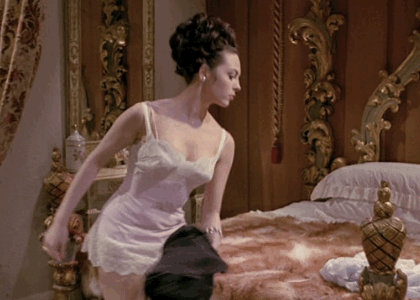
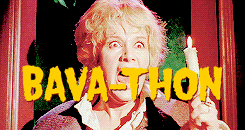


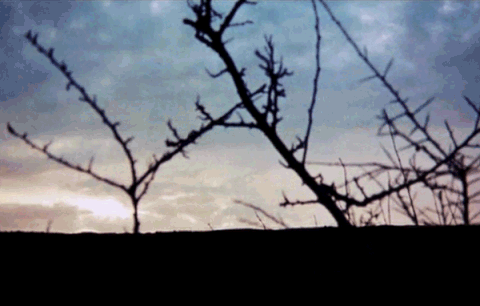
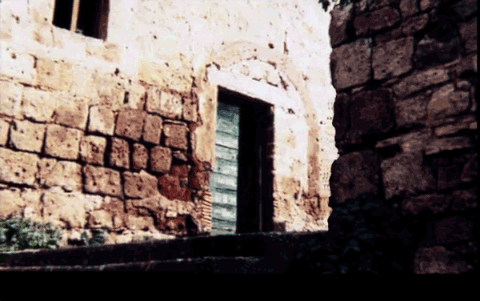
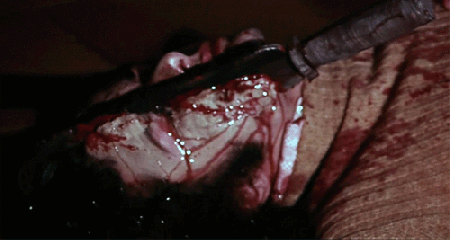
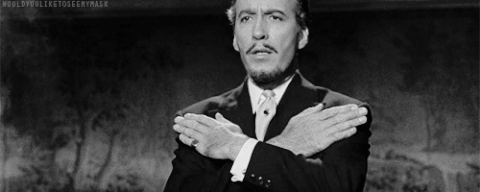
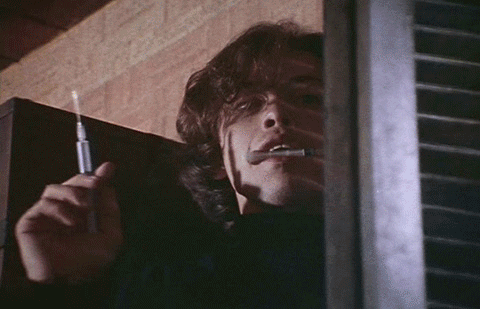
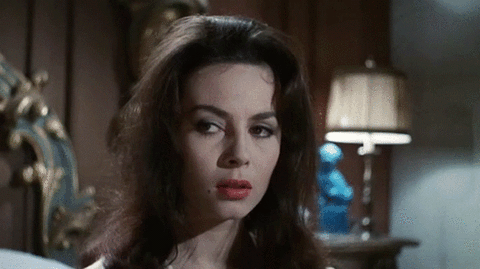
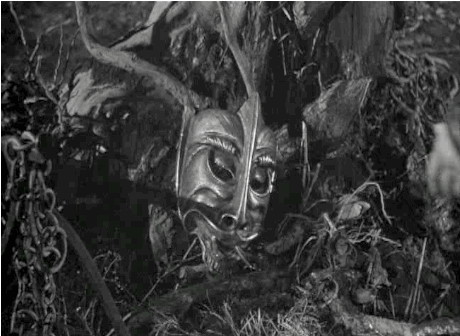
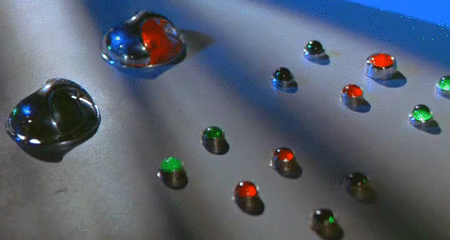

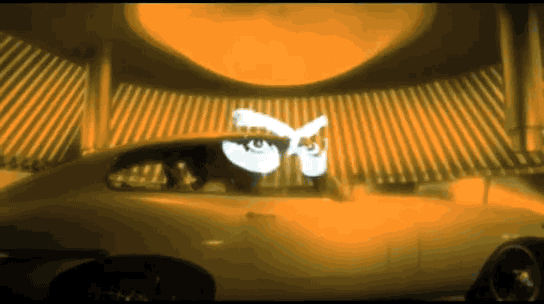

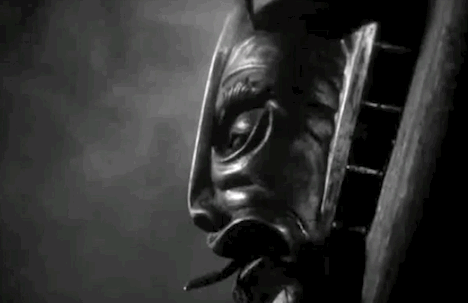
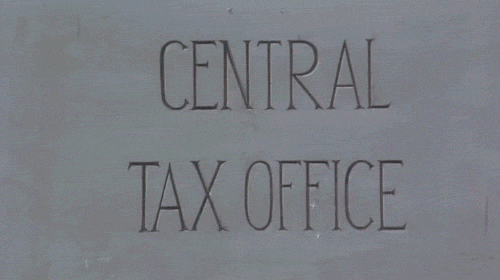
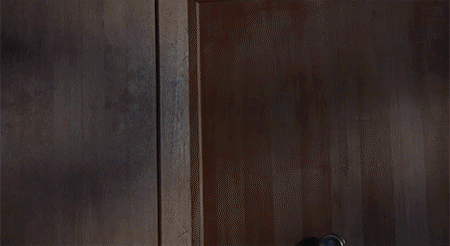
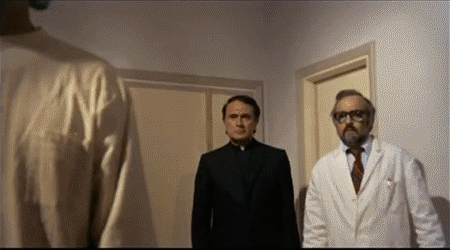
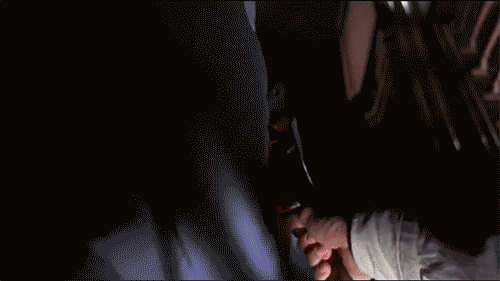
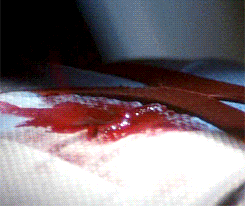
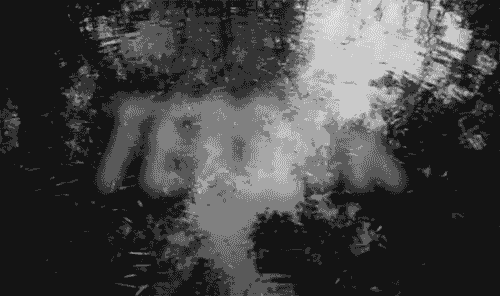

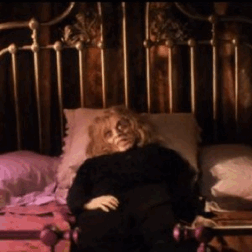
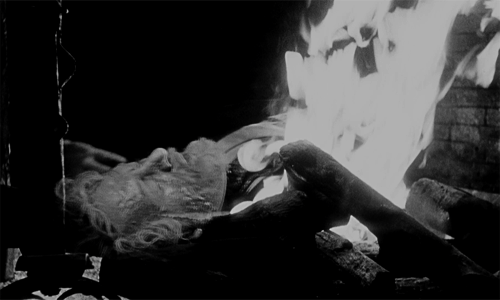
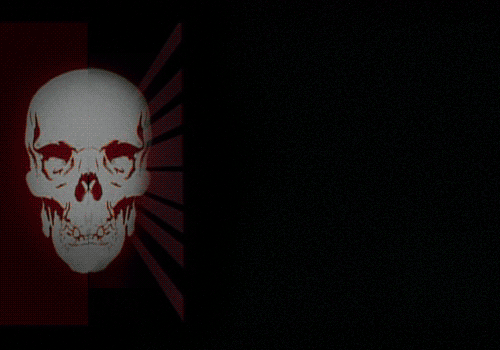

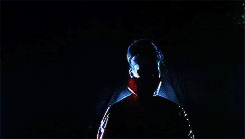
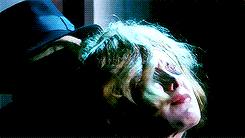

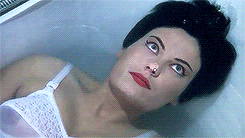


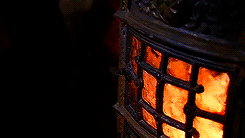
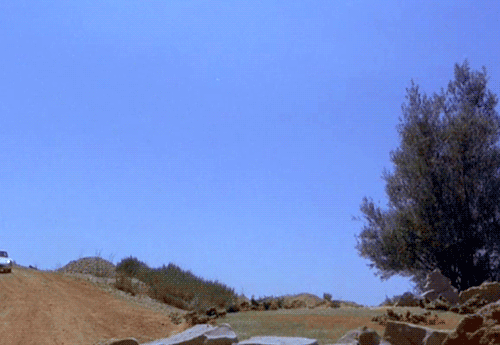

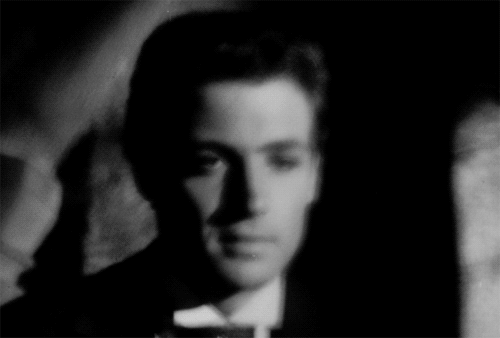

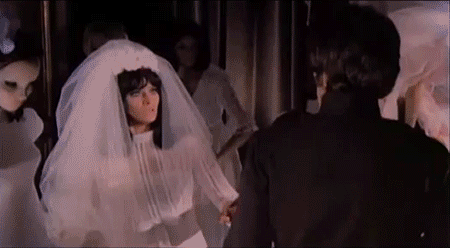
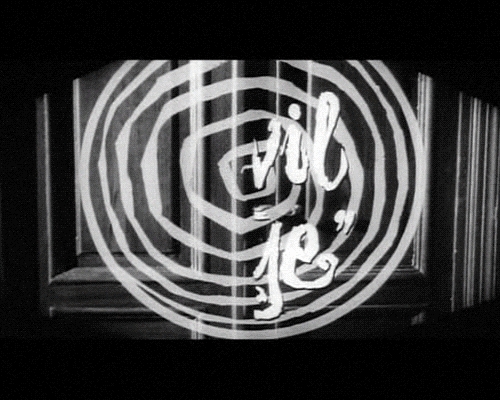

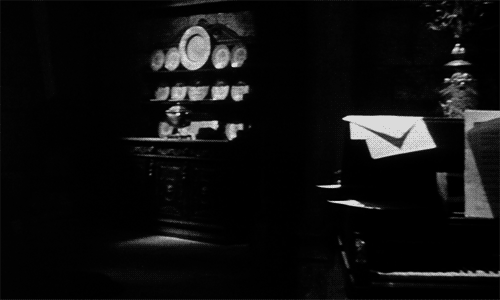
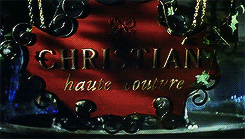
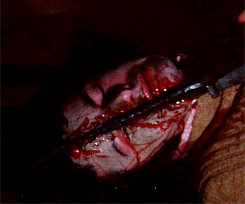


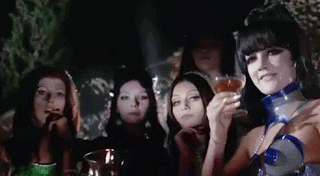
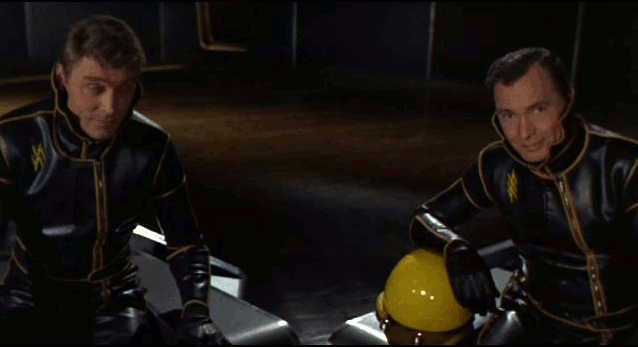
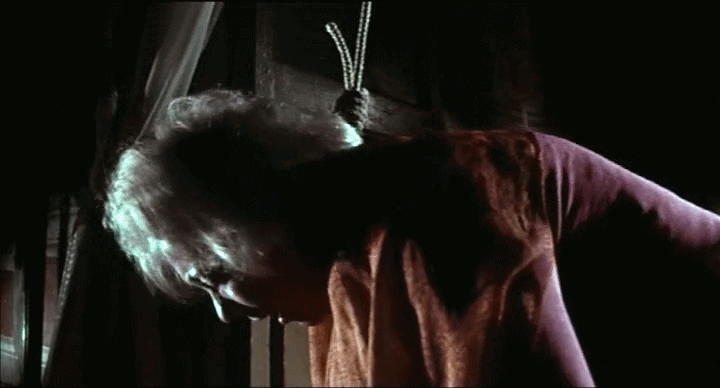
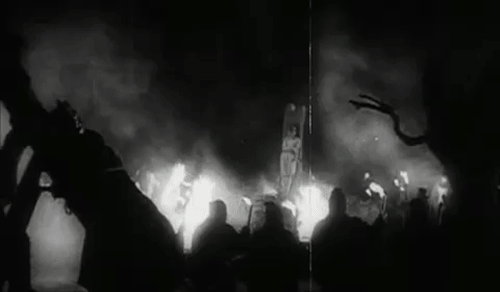
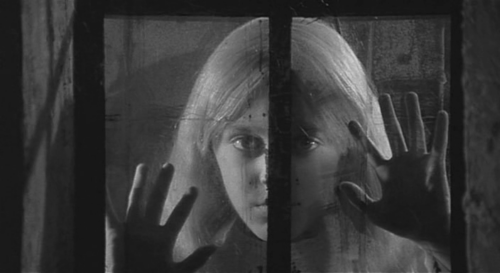
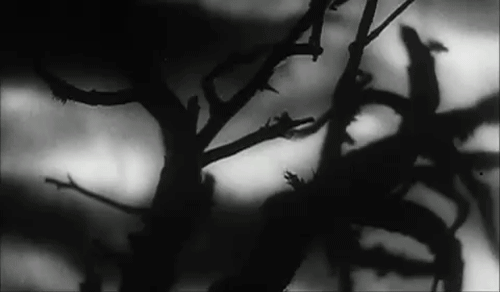
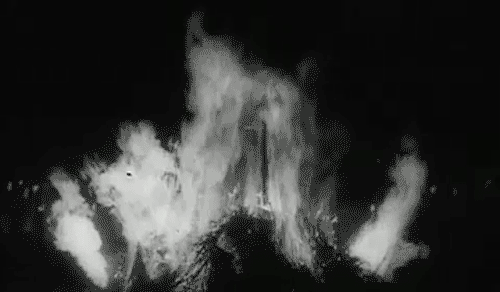
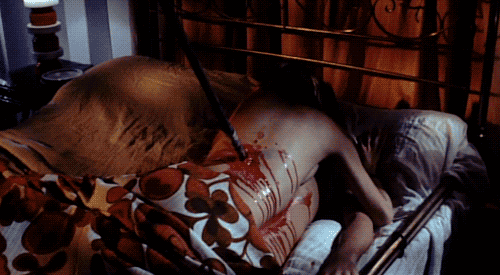
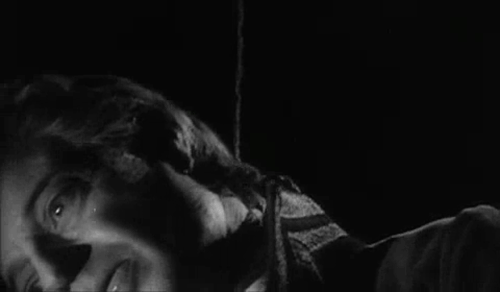
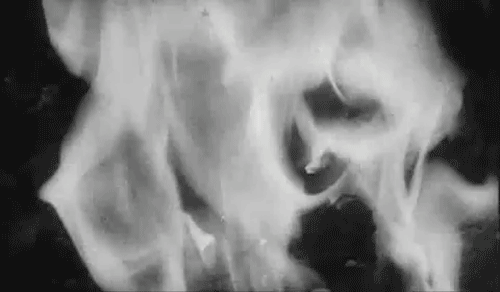
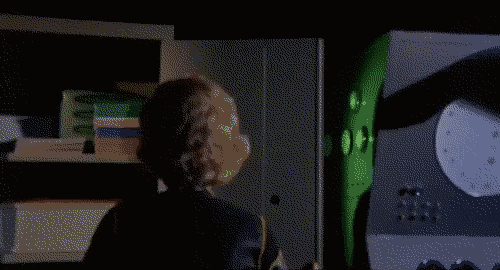
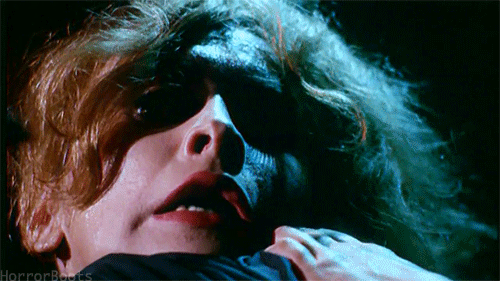
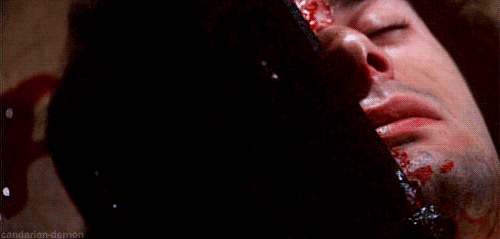
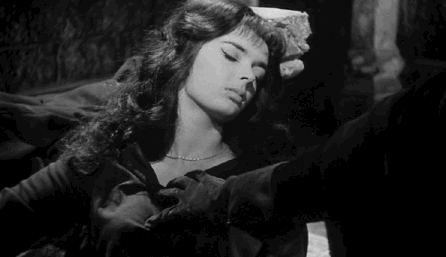
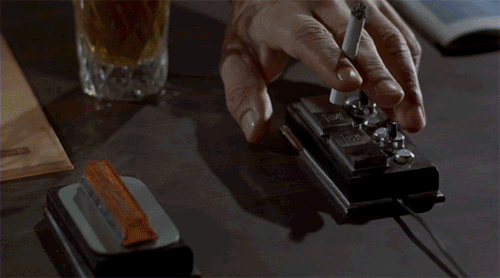
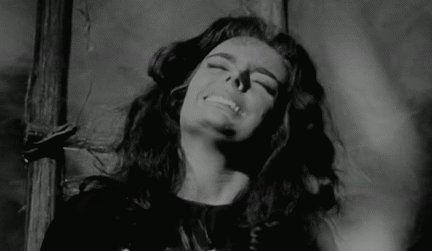
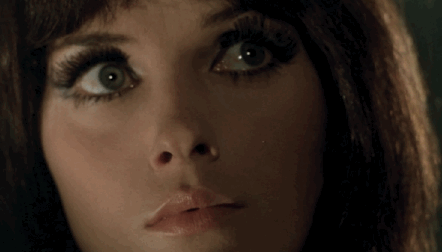


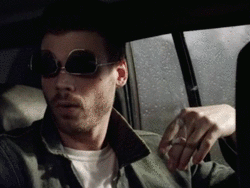
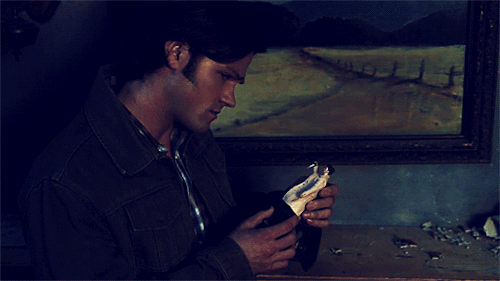
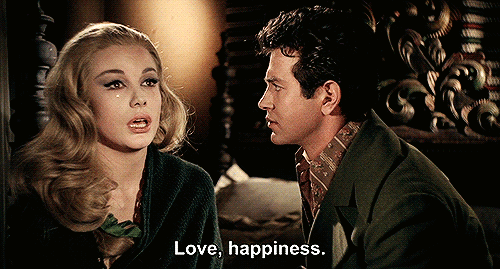
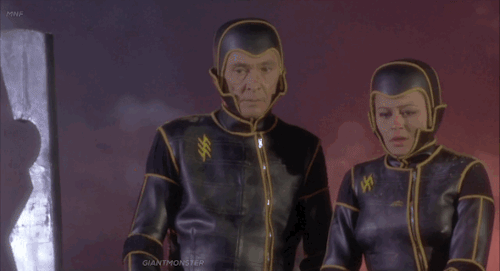
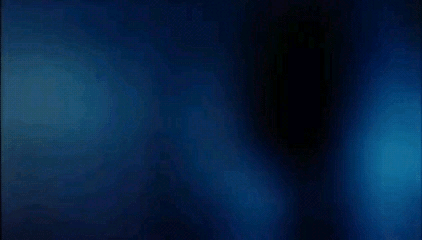
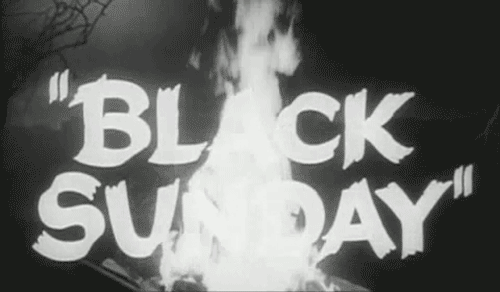
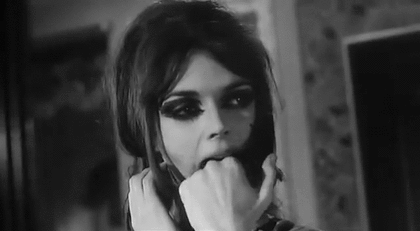
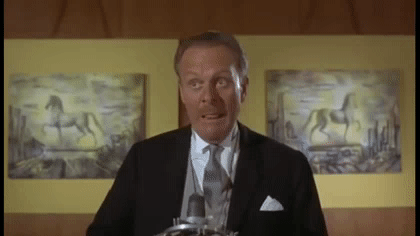

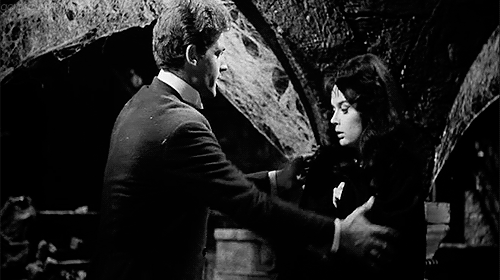
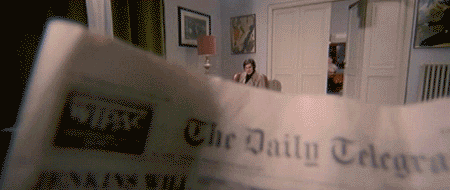
____
Further
The Mario Bava Webpage
Mario Bava @ IMDb
Where to begin with Mario Bava
MAESTRO OF THE MACABRE
Mario Bava profile @ Senses of Cinema
Why your favourite directors love Mario Bava
The unusual and disquieting visuals of Mario Bava
Mario Bava All the Colors of the Dark
«L’espion qui venait du surgelé» de Mario Bava
Mario Bava: The Baroque Beauties of Italian Horror
The Mondo-Esoterica Guide to Mario Bava
The Macabre Movie Magic of Mario Bava
How Guillermo Del Toro Conjured Italian Horror Meister Mario Bava in ‘Crimson Peak’
The Creepy, Campy Stylings of Mario Bava
La bave à la bouche : Portrait de Mario Bava
____
Extras
Mario Bava – The Genremaker
Mario Bava remembered by Cameron Mitchell
Mario Bava and Carlo Rambaldi
Joe Dante on Mario Bava’s LISA AND THE DEVIL
Mario Bava Tribute Los Angeles,Ca. Oct.1993
______
Quotes
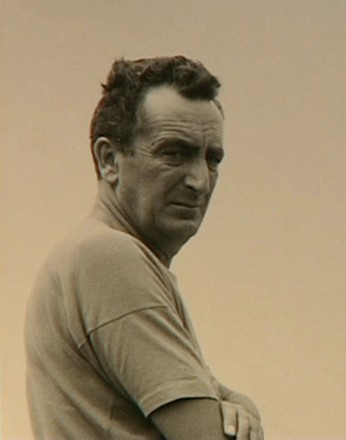
“In my entire career, I made only big bullshits, no doubt about that.”
“People, and critics too, should know about the circumstances under which I had to shoot my films. On Terrore nello spazio, I had nothing, literally. There was only an empty soundstage, really squalid, because we had no money. And this had to look like an alien planet! What did I do then? I took a couple of papier-mâché rocks from the nearby studio, probably leftovers from some sword and sandal flick, then I put them in the middle of the set and covered the ground with smoke and dry ice, and darkened the background. Then I shifted those two rocks here and there and this way I shot the whole film.”
“I shoot a film and then I run to the nearest bank to collect the cheque in order to pay the arrears, taxes and so forth, and guess what? It’s a dud cheque, and I’ve worked for free.”
“I think of myself as one who manages to get along. I don’t care about being successful, I just want to go on and on. My father used to tell me this, and he was in the movies since 1906. I’ll never be another Antonioni; I love to improvise, to solve problems, to create new scenes out of emergency… In my opinion a good director shouldn’t do this: he should stick to the original script and schedule.”
“My fantasies are always horrible. For example, I love my young daughter more than anything else in the world, but when I dream of her its always frightening. Do you want to know what character is haunting my subconscious? A violinist who serenades the woman he loves by playing on the tendons of his arms. Everyday life works on my imagination. Just this morning I found a letter, still sealed, from a friend who has since died, written to me ten years ago. It was like receiving a letter from a dead person. What would you do in my place? I burned it…”
“I wanted to be a painter until I was twenty years old. Even today, I am very involved in designing the images for my films.”
“I accept anything they give to me. I am too willing to accomodate any difficulty. This is not the way one creates masterpieces. Also, I’m too cheerful and the producers don’t like that: they want people who take things very seriously, and above all who take them seriously. But how can I?”
“I’m especially interested in movies stories that focus on one person: if I could, I would only tell these stories. What interests me is the fear experienced by a person alone in their room. It is then that everything around him starts to move menacingly around, and we realise that the only true ‘monsters’ are the ones we carry in ourselves. Alas, the marketplace demands terrible papier-mâché creatures, or the vampire with his sharp fangs, rising from his casket!”
“Movies are a magicians forge, they allow you to build a story with your hands. Who knows… at least, that’s what it means to me. What attracts me in movies is to be presented with a problem and be able to solve it. Nothing else; just to create an illusion, and effect, with almost nothing. that’s the best thing about it.”
“Then I had to make films in a hurry: twelve days at most. With everything in my head. I used to shoot having the editing already clear in my mind, knowing where to cut, without wasting anything, not even a foot of film.”
“I watched La maschera (BLACK SUNDAY) again, five years ago, because an American production company asked me to shoot a colour remake of it. I refused because my son and I split our sides with laughter while watching it.”
“I make horror movies, my aim is to scare people, yet I’m a fainthearted coward; maybe that’s why my movies turn out to be so good at scaring people, since I identify myself with my characters… their fears are mine, too. You see, when I hear a noise late at night in my house, I just can’t sleep… not to mention dark passages! Sure, I don’t believe in vampires, witches and all these things, but when night falls and streets are empty and silent, well, sure I don’t believe, etc., but… I am frightened all the same. Better to stay home and watch TV!”
“I had a very good friend who was also a great actor, the best I think. For years we were very close: we saw each other three times a day. One fine morning he decided to send me a magnificent present: a pair of massive silver candlesticks! Not knowing how to thank him, I never called him again, never gave the slightest sign of life! I can’t say why exactly. I wanted to do something for him, something extraordinary. Not knowing what to do, I simply disappeared.”
______________
20 of Mario Bava’s 34 films
______________
Shock (1977)
‘About three years before his death, Italian master of the macabre Mario Bava directed Beyond the Door II (AKA Shock) a more than good scary movie and at the same time the last movie of his career. The Italian production does not use extreme effects as much as a professional cinematography and the carefully used sound effects which really add something to the great atmosphere. Another positive note are the performances of the main actors Daria Nicolodi, David Colin Jr. and John Steiner who deliver believable performances. Ivan Rassimov has a small part portraying a psychologist who gets little screen time and only has a few lines which are more or less irrelevant to the plot. Altogether Mario Bava managed to get a dignified farewell from the big screen and his death ended an era in the Italian film industry.’ — Movie-censorship
Trailer
Excerpt
______________
The House of Exorcism (1975)
‘As the legend goes, after failing to secure a distribution deal, producer Alfredo Leone decided to re-shoot and re-edit Baa’s film Lisa and the Devil to make it look like a film in the vein of William Friedkin’s The Exorcist (1973). Hoping to cash in on the popularity of Friedkin’s groundbreaking film, Leone completely reconstructed Lisa and the Devil to feature the story of Lisa’s possession and the efforts of a priest to perform an exorcism. The resulting travesty was aptly renamed House of Exorcism and was an unfathomable commercial and critical disaster upon its American release in 1975.’ — Pop Matters
Trailer
the entire film
_______________
Rabid Dogs (1974)
‘Rabid Dogs (also known as Kidnapped and Wild Dogs) nearly became Mario Bava’s “lost film” after a series of production hassles and a freak accident that claimed the life of one of its financial backers during the summer of 1974, only to be rescued from obscurity some 20 years later by Spera Cinematografica, a production company headed by actress Lea Lander. In the film, a group of bank robbers kidnap a young woman (Lander) and, later, a man and his sick child in an effort to dodge a widespread police hunt. The back of the film’s now out-of-print DVD cover likens Rabid Dogs to “Quentin Tarantino remaking Last House on the Left—inside a moving car”. But while Rabid Dogs is every bit as nihilistic as the Wes Craven classic, it’s not quite the same type of cautionary tale. Over the course of 90 minutes, the film’s ghoulish bank robbers mentally torture Lander’s squealing Maria and the man who will supposedly drive them to safety. Because the film lacks the expressionistic kick of some of Bava’s early works (Blood and Black Lace, The Whip and the Body), the film is often viewed as a stylistic departure for the director. But there’s no mistaking Bava’s unique fascination with religion and its complicated struggle against human reason (see Kill, Baby…Kill for more). The film’s thieves are certainly monsters (they force Maria to urinate in front of them and repeatedly torture her with the idea of rape), but they’re also remarkably loyal to the group order. Though Blade (Don Backy) doesn’t feel any remorse at the prospect of killing a sick child, he feels extreme regret when a farmer accuses him of trying to steal a bunch of grapes. A model of economic storytelling, Rabid Dogs is a collection of chilling litmus tests that repeatedly point to humanity’s complex notions of moral decency and entitlement. The seemingly immoral Dottore (Maurice Poli) spearheads the operation and while he seems to care only about saving his own hide, he’s still sensitive to the cons his men and kidnap victims repeatedly try to pull. The film’s final scene sees the virginal Maria dying so that a young babe could live. This unselfish act of spiritual sacrifice is fascinatingly subverted by a final plot twist so shocking that it forces the spectator to reevaluate everything that transpired prior. Quite cynically, Bava evokes a human society where no one is to be trusted.’ — Slant Magazine
Trailer
Opening credits
______________
Lisa and the Devil (1973)
‘Lisa and the Devil depicts a chilling hell where sinners are condemned to repeat their mistakes and relive their tragedies once and again, ad nauseam, until the end of time. The fact that the soundtrack of Lisa and the Devil is made almost exclusively of the Concerto of Aranjuez and its variations, further reinforce this reading. As most Bava films, the visuals and narrative of Lisa and the Devil boil down to a gothic story portraying a grim Freudian nightmare. Indeed, the film successfully portrays the annihilation of the patriarchal figure, a domineering mother imposing her strong will on her child, and the strong emotional response exhibited by Maximilian as a result of childhood traumas. In addition, Lisa and the Devil features dream-like images and it takes place in an old creepy mansion located in the outskirts of a medieval town. But then again, one cannot deny that, notwithstanding its cinematic beauty and lyrical plot, Lisa and the Devil may be an extremely difficult film to follow. As mentioned before, it may take several viewings to properly appreciate Bava’s magnificent movie. As a consequence, one should not be surprised at the nightmarish tragedy behind the release of Lisa and the Devil.‘ — Pop Matters
Trailer
the entire film
________________
Baron Blood (1972)
‘After spending several years exploring more contemporary genres, director Mario Bava (BLACK SUNDAY) returned with BARON BLOOD to the gothic as a setting for a gruesome thriller. Working with producer Alfredo Leone, Bava crafted a film that is loyal to the bylaws of traditional horror, but is infused with a more modern visual style. An American professor (Antonio Cantafora) travels to the estate of his ancestor, the sadistic Baron Otto von Kleist, seeking the truth beneath his notorious reputation. When he and his assistant Eva (Elke Sommer) read aloud an ancient incantation, the Baron’s spirit is resurrected, leading to a series of violent deaths within the haunted castle.’ — Fandor
Trailer
the entirety
______________
A Bay of Blood (1971)
‘Bava’s A Bay of Blood has been called one of the most influential horror films of all time, a claim that is difficult to refute upon examining the evidence. Its impact can still be felt to this day, as we see Bava’s legacy live on in the never-ending flow of remakes and sequels to the movies he inspired. Visual flair is one element missing from most slashers (Halloween being the most obvious exclusion) that is abundant in A Bay of Blood. Long before beginning his directing career, Bava established himself as one of Italy’s best cinematographers. The film’s scenic locale lends itself to being photographed, and Bava (serving as his own director of photography, due to budgetary constraints) stylishly showcases it. Even the gruesome death scenes seem elegant.’ — iHorror
Trailer
Carnage Count
Ending
________________
Four Times that Night (1971)
‘Although largely overlooked by Anglo-American critics today and rarely exported, sex comedies were the most popular domestic films released in Italy during the 1960s and 70s, easily outlasting the more famous Euro-cult genres like the Spaghetti Western and Giallo. For his one and only incursion into the genre, director Mario Bava determined to make something different to the often rather generic entries that usually relied on gratuitous nudity and crude humour. Like many films before and since, the script for Four Times that Night took its inspiration from the work of Japanese director Akira Kurosawa and his film Rashomon (1950) which dealt with the idea of truth through four different recounts of the same event. The script here follows a similar pattern, the first three stories being from three who were present and who tell widly different versions of the tale, seemingly for their own motives – Tina to defend her honour in the eyes of her mother, Gianni as a boast to his pals and the porter as an erotic story for his friend. There is some good humour in these scenes as we see the extremely different portrayals of the same characters and particular events, while the film manages to largely avoid the genre’s usual crude humour, even in the portrayal of a male gay couple who, quite amazingly for the era when the film was made, are treated completely rationaly and never played for cheap laughs.’ — Mondo Esoterica
Trailer
the entire film
_______________
Roy Colt and Winchester Jack (1970)
‘Mario Bava will be remembered for his gialli and horror movies, not for his spaghetti westerns. Roy Colt and Winchester Jack is his third and final western. The first two, The Road to Fort Alamo and Ringo from Nebraska, had been fairly conventional western movies, Roy Colt and Winchester Jack is definitely out of the ordinary. In an interview Bava declared that the movie was supposed to be a serious spaghetti western in the style of Leone, but that he himself had taken the decision to turn it into a spoof.’ — Spaghetti Western
Trailer
________________
Blood Brides (1970)
‘It’s remarkable how quickly Mario Bava moved beyond what we now consider the limits of the genre he principally originated. Depending on whether you want to count his not-quite-there-yet Hitchcock pastiche, The Evil Eye, Blood Brides (AKA A Hatchet for the Honeymoon) was either Bava’s third giallo or his second, yet it shows him already seeking to enlarge significantly upon the formula solidified by Blood and Black Lace. A Hatchet for the Honeymoon is a murder mystery of sorts (any movie trying to qualify as a giallo must at least pretend to be one of those), but the killer himself is the one doing the sleuthing when it comes to the truly unsolved crime— which occurred decades before the film’s main action— and the clues are all hidden in the assassin-turned-detective’s repressed childhood memories. And as if that weren’t unusual enough on its own, A Hatchet for the Honeymoon also finds time to be one of its era’s stranger ghost stories.’ — 1000 misspent hours
Trailer
the entirety
______________
5 Dolls for an August Moon (1970)
‘It is noteworthy that, for the only time, Bava served as editor on this film, possibly in an attempt to save the production company some money. Certainly Bava manages to keep the action moving swiftly, even if it is at the expense of narrative cohesion. Bava adopts a jagged, succinct editorial style that sets the film apart from his earlier work, though it can be seen in more refined form in the films which follow it. From beginning to end, Bava cuts sharply from one set-piece or location to the next, with few of the atmospheric longeurs typical of his other work. There are no dissolves or fades, and the very concept of time is basically ignored. In utilizing this technique, Bava gives a further boost to the otherwise uninspired screenplay by lending it a subtly disorienting quality.’ — Troy Howarth
Excerpt
Excerpt
Excerpt
_______________
Danger: Diabolik (1968)
‘The word cool just doesn’t do justice to Danger: Diabolik. It’s an uber-cool cult classic. If Danger: Diabolik is Dino De Laurentiis’ sibling movie to his own Barbarella from the same year, then it’s a trendier and wiser younger brother. After a run of mould-breaking and influential horror films, Mario Bava used his expert craftmanship to perfectly capture many popular traits of late-1960’s cinema: the spy thriller, the heist movie, exploitative sex and violence, and colourful escapism. Far from being euro trash, Danger: Diabolik is sublime pop art. It’s the Citizen Kane of hip psychotronic cinema, a comparison that isn’t quite as daft as it first sounds – Bava’s inventive, experimental and influential techniques have more in common with Orson Welles than one might imagine. For example, Diabolik’s underground lair, largely created through stunning matte paintings and subtle framing, is completely in the spirit of Welles’ audacious design for Kane’s Xanadu. Adapted from the popular Italian fumetti comic featuring the iconic anti-hero Diabolik, Bava succeeds in recreating the visual pace of the comic strip with cinematic flair. Clearly aware that the art of the comic book panel is to capture movement and emotional intensity in a still image, Bava injects every shot with a similar sense of depth and perspective, and every cut with the same dramatic urgency. His famously resourceful use of a small budget is remarkable – the impressive sets rival You Only Live Twice, tremendous underwater sequences are the equal of Thunderball, but all are filmed for a pittance of the Bond budget.’ — Fantastic Voyages
Trailer
Excerpt
the entire film
______________
Kill Baby, Kill! (1966)
‘There’s an overwhelming sense here that the horror that plagues the film’s characters is a response or manifestation of their fears and deepest desires. The film’s aggressively baroque exteriors are often in sharp contrast with the spare, almost Brechtian interiors. Because Bava meant to create a strange dialectic between a hallucinatory, pastoral exterior and a deceptively sterile interior, there’s a heavy emphasis on doors and windows closing on their own or blocking Melissa’s passage between worlds. The girl’s gaze, though, is unavoidable, as is her bouncing ball, which has a way of defying space and teasing the film’s characters, even in death. (Another point of reference: Guillermo del Toro would rework the film’s infamous shot of Melissa peering through a window at Nadienne for El Espinazo del Diablo.) Equally baroque (or maybe trashily succinct?) is the film’s dialogue. Anyone remotely familiar with Italian horror films has learned to accept their requisite English dubbing as part of the overall package. Erika Blanc’s lines are an artifice all their own (not to mention Carlo Rustichelli’s trippy, quintessentially Italian-lounge score). Who knows who dubbed her English lines, but the voice-over artist’s performance is a work of tongue-in-cheek genius. “Something in this town is supernatural. Tell me, why did they abandon the church? I’m scared, I almost think the devil’s here,” she moans in near-rhyme as Blanc clings to Rossi-Stuart’s Paul. Luchino Visconti purportedly led a standing ovation of the film at its Italian premiere. Indeed, what with all its violent explosions of colors and labyrinthine, almost-monochromatic alleyways seething with expressionistic shadow-play, Kill, Baby…Kill! often plays out like Bava’s answer to Visconti’s equally artificial, sensuous, and deliriously campy Senso.’ — Slant Magazine
Trailer
the entire film
_____________
Knives of the Avenger (1966)
‘This film has Mario Bava’s coloring (thick and rich, with a lot of lingering shots of sunsets, sun on rolling waves, puddles reflecting lights, and the blue and red lighting like Bava’s monster movies) but the tale itself is a mix-up of several other movies, notably Shane and Kirk Douglas’ The Vikings (with a long bar scene that looks like it’s from Chuck Heston’s Agony and the Ecstasy). Bava shot Knives of the Avenger in 6 days, and this shows up onscreen, but this film holds together really well for a 6-day movie, a minor-accomplishment coupled with Bava’s ace directing chores. The English-language dubbing is as crude and unexacting as it was and many other 1960s Italian epics.’ — Cinemagraphe
the entire film
_____________
Planet of the Vampires (1965)
‘Introducing Italian director Mario Bava’s 1965 “Planet of the Vampires,” prior to its Cannes Classics screening in a freshly restored 4K print, B-movie maniac Nicolas Winding Refn had the following news for the fanboys. “Planet of the Vampires” is the film that Ridley Scott and Dan O’Bannon stole from to make ‘Alien.’ We found the elements, we have the evidence tonight. This is the origin!” he said. Refn, who came to tubthump “Vampires” prior to the world preem of his “The Neon Demon,” is clearly the biggest Mario Bava fanboy of them all. “It is a truly great film,” he enthused. “It’s melodramatic; it’s operatic; it’s campy; has great music; leather costumes; space ships; it has really wacky dialogue in Italian that does not make any sense.” The film’s 4K restoration came about after he suggested it to Italian maverick producer Fulvio Lucisano, who produced “Planet” and also distributes Refn’s movies in Italy. “I’m working with the guy who made Mario Bava’s movies, which is really cool.”’ –– Variety
Trailer
Excerpt
______________
Blood and Black Lace (1964)
‘While Bava certainly made a fair amount of supernatural or occult horror films, as well as quite a few other types of films, it was his contribution to the giallo that remains his most important. Those films are characterized by their sumptuous color schemes, horrific and visually arresting set-piece murders, and often completely incoherent plot. Blood and Black Lace only features two of these, actually having quite a straightforward and believable plot. It’s something straight out of an Agatha Christie novel for the nihilist set: a group of young models is systematically attacked and murdered by a man dressed in black with a white, featureless mask as he attempts to obtain a diary which has damning secrets of everyone else in the Fashion House where the action takes place.’ — The Nerdist
Trailer
the entire film
______________
Black Sabbath (1963)
‘One of the most praised and appreciated of all anthology horror films, Mario Bava’s Black Sabbath (I Tre Volti Della Paura in its native Italy) came about partly because of the huge success of AIP’s Tales of Terror (1960), which presented three short stories by Edgar Allan Poe directed by Roger Corman. Sidney Salkow’s Twice Told Tales (1963) attempted to repeat that movie’s success by casting its star, Vincent Price, in three tales by Nathaniel Hawthorne. It was AIP who, in the middle of their Poe cycle and with Boris Karloff under contract, saw the lucrative potential in the casting of the then-host of the successful US anthology TV series Thriller in an anthology picture and have him star in one of the episodes as well. Mario Bava’s Black Sunday had been a big success all around the world and hence the film was retitled Black Sabbath everywhere except Italy. That, however, was not the only change. Apparently the content of the version Bava turned in was deemed too controversial by its US distributors who recut, reordered and rescored the film such that the two different titles ended up referring to quite different movies.’ — This Is Horror
Trailer
the entire film
_______________
The Evil Eye (1963)
‘Mario Bava’s baffling, ultra-stylish Italian thriller is indebted equally to Alfred Hitchcock and Agatha Christie, but it launched its own genre in Italian cinema: the giallo (named after paperback thrillers with yellow covers), marked by bizarre, labyrinthine plots and stylish setpiece murders. Young film critic Dario Argento was impressed by this film and varied its elements in such landmarks as The Bird with the Crystal Plumage and Deep Red. The Hitchcock debt is seen in the Italian title, The Girl Who Knew Too Much (a nod to The Man Who Knew Too Much ) and in Bava’s whimsical “cameo” in a photo whose eyes follow the heroine in her bedroom. The Christie debt is seen in the complicated “alphabet” plot; her novel The Alphabet Murders would be filmed in 1966.’ — Pop Matters
Trailer
the entirety
_____________
Hercules in the Haunted World (1961)
‘It’s fair to say that Mario Bava didn’t become Mario Bava as we know him until around 1963. Even with Black Sunday already under his belt, it was the one-two punch of The Girl Who Knew Too Much and Black Sabbath that truly crystalized the thematic and aesthetic preoccupations most strongly associated with him. In the brief interim, he explored other genres (and would continue to do so later in his career), most notably high fantasy. One product of this era is the especially noteworthy Hercules in the Haunted World, a horror-tinged tale that sends the Greek demigod straight to hell, where Bava transforms the underworld landscape into a primordial canvas for the signature garish style that would define much of his later work.’ — Oh the Horror
Trailer
the entire film
_______________
Black Sunday (1960)
‘Former Italian cinematographer Mario Bava made his feature directorial debut (at age 46) with The Mask of Satan (aka Black Sunday). The atmospheric, black and white film stirred up controversy due to some disturbingly violent content (for the time) and made an international star of lead actress Barbara Steele (8½ [1963], Castle of Blood [1964], Caged Heat [1974], Shivers/They Came from Within [1975]). It also marked the beginning of a multi-picture deal between Bava and American International Pictures who would release several of Bava’s subsequent films, usually in altered and censored forms. Beginning in the late 1960s, Bava’s The Mask of Satan/Black Sunday has often been cited by film critics and historians as an example of an influential and effective horror film of lasting artistic value.’ — Senses of Cinema
Trailer
the entire film
______________
Caltiki, The Immortal Monster (1960)
‘Two years after working together on 1957’s I Vampiri, the first Italian horror film since the 1910s, director Riccardo Freda and cinematographer Mario Bava teamed up for Caltiki, the Immortal Monster, a curious (and sometimes unwieldy) fusion of science fiction and gothic horror elements that lifts not only its basic premise from Hammer’s The Quatermass Xperiment, but also entire sequences. Freda reportedly walked off the set some time before production concluded, leaving Bava to direct the rest of the film as well—something that Freda maintained he’d intended to do so from the start to pave the way for Bava’s career as a filmmaker. Whatever the truth of these claims, there’s no denying that Caltiki remains an impressive showcase for Bava’s inimitable skills behind the camera, in particular his uncanny ability to craft moody atmosphere and some extremely grisly imagery (for 1959, anyhow) out of the simplest and most frugal of cinematic means.’ — Slant Magazine
the entire film
*
p.s. Hey. ** Dominik, Hi!!! I aim to serve. Ha ha, yeah, I’m sure even I would feel a heart tug at the ‘gift’ of a free baby. Your love was kind. Strangely, it never did rain, but something vacuumed the sky of its mug, and now we’re finally in the Fall today, I think, maybe, knock on wood. Speaking of mug, love deleting Donald Trump’s mugshot, G. Have a great weekend! ** Probably, male, Hi. I see. I find the suicides of people I even remotely know weirdly affecting. Oh, I don’t know, I really like Klossowski’s fiction, ‘Baphomet’ included. I guess it’s just a taste thing? If you ever want to try again, ‘Robert ce soir’ is possibly his best in my opinion. Have the loveliest weekend you can. ** Charalampos, I’m glad the missing images thing got sorted. I haven’t been to Lyon in a while, but, when I do, I’ll hit up Musée des Beaux-Arts de Lyon. Thanks. ‘Sade my neighbor’ is excellent. My fave of his fiction is ‘Robert ce soir’, but that might just be me. Bonnest weekend from the heart of bristling Paris. ** David Ehrenstein, Hi. Yes, indeed. There was a video in the post of Ruiz talking about Klossowski. Quite interesting. ** _Black_Acrylic, Thanks, Ben. Good weekend going on? Here’s hoping Leeds’s manager doesn’t kiss any of his players on the lips. ** Tosh Berman, Hi, Tosh. I think you could be right about Klossowski being Sade’s first literary champion, but I’m not totally sure. I guess I can go try to find out. I hope your weekend bears mega-fruit. ** Misanthrope. Talent is pretty important in the arts. However, what ‘talent’ means is pretty flexible. I’ll do Insta only if I feel it’s absolutely necessary for the film when the time comes. I’m okay with dwelling in the backwater of Facebook. So, what do you do to rid yourself of the hernia if it’s not to be sliced out? That party sounds potentially dangerous, but also sounds potentially blast-like. So what was it? ** Nick., Hi. No prob. I think every past decision I made that seemed potentially disastrous worked out for the best. Well, except for choosing the producer of Zac’s and my film, but I digress. You sound pretty alright. I see nothing in there but forward steppage. (That’s not a word?) I went to Fire Island twice back in the 80s. Meh. Cruising + sun + discos were never my thing. Questions, uh … am I the only person who doesn’t give a shit about Ru Paul’s ‘Drag Race’? How do you define ‘mildly psychotic’? As for me, I’m just working on the film and highly enjoying the 10 degree drop in temperature today. ** Steve Erickson, Ouch indeed. Sorry, man. Everyone, Steve has ‘reviewed BAD THINGS, a rather tepid attempt at a queer, female remix of THE SHINING’ here. ** Minet, Hi. Oh, cool, weird, nice about the epithet coincidence. Is Cadinot’s grave in Paris? I should find out. At one point I had this idea that I wanted to write a long essay or short book about this Cadinot performer Pierre Buisson who I was obsessed with — he’s employed in my novel ‘Frisk’ — and I wrote to Cadinot to ask if I could interview him about PB, and he said yes, but then he died about two weeks later. And the book/essay idea faded away. I agree PK is quite underrated. Nice. Have the most splendid weekend. ** peachy keen Darbz ✌🍑, ‘Peachy keen’ takes me back. Oh, I see, oops, sorry, although you seem to okay with the non-‘success’. You seem like someone who could pull off wearing one of those neck-hiding Victorian collars? Awesome that the photo hit the mark. Cool, thank you! When you register to leave a comment, you have you put your email address, and I can go find it if I need to. My friend George used to get so extremely manic that it felt like being beaten to death with cheer. Mm, yes, I think I could donate two inches. Especially if it lets you ride a roller coaster. You knew that would melt any reservations I might have had. How do I do that? Votive candle plus very scrunched eyes? I hope your friend is chill re: your neck. Maybe a turtleneck shirt? You seem like you could pull that off too? ** John Newton, Hi. People often ask me about my favorite horror movie, and I can never think of an answer. I think I just like the horror movie realm, but I don’t think I especially prize any of them. Same with disaster movies. I love them but none of them stand out. And I’ve hardly ever read horror fiction. Weird, I know. I vaguely remember ‘Devil’s Rain’, yeah. Vaguely. Coincidentally, you get some horror up above this weekend. Fun horror mostly. Gotcha about queer. I totally get that. You got me as to why those things are so omnipresent in current day pop culture. People are so weirdly oversensitive and overly self-protective right now. I just don’t get it. I don’t know what kefir and kvass are, but I’ll look them up. May you have a very vivifying weekend, sir. ** Okay. I went back and fixed and added some stuff to the blog’s old, decimated-by-time Mario Bava Day specifically so you could have some cheap-ish fun for the weekend’s duration. Give that a shot? See you on Monday.




 Now available in North America
Now available in North America 
Hi Dennis! Greetings from Athens. We are having a blast. So many dicks, marble and otherwise. We mailed your zine yesterday, so you should receive it soon. Delos was amazing. We are going to Delphi tomorrow to consult the oracle. Do you have any questions you’d us to ask for you? Xoxo
Dennis, I have a feeling most of these movies would scared the shit out of me, hahaha.
Well, I guess I just keep doing what I’m doing. Being careful. Like, I don’t spend my days thinking about it, but I do things like not lift really heavy weights anymore, hold my stomach when I cough or sneeze, etc. Just take care of it in that fashion. Really, unless it somehow pops out (like the others did) and twists, I don’t have any worries. Right now, it’s really small, so there’s not much worry in that regard. Many people live their whole lives with hernias with no complications at all. I’ll just keep an eye on it.
Yeah, so the party’s tonight. Lil D is ready to go. We’ll see how it turns out. Kayla already told him he better not be actin’ a fool and throwing up and passing out if he drinks. He handles drink about as well as my father and I did. 😮 I suspect everything will be all right. I’ll keep an eye on him like he’s my hernia.
Man, I should say I’ve been busy af the past couple weeks, both at work and after. It’s nonstop at work and then I have all these little errands and obligations afterward. Bleh. It’ll lighten up.
Oh, and Rigby and Mieze and I are talking about getting together sometime in the fall. Probably London. I’d prefer Paris, but money’s a thing. However, I’m thinking maybe a day trip to Paris. I’ll let you know what we plan and see if we can’t get up with you some day. It’d be a nice time. Man, it’s been a while. What, that THEM 30-year anniversary performace? Yikes.
Not to interrupt today’s Bavalicious bloodbath, but I found some P Klossowski online PDF links that might aid people in their research of this fascinating figure.
https://monoskop.org/images/3/34/Klossowski_Pierre_Sade_My_Neighbor.pdf
https://monoskop.org/images/archive/4/48/20191122194809!Klossowski_Pierre_Nietzsche_and_the_Vicious_Circle.pdf
https://monoskop.org/images/b/b0/Klossowski_Pierre_Living_Currency.pdf
The Baphomet is on Archive.org
Bava seems very fond of that quick zoom camera gesture, heh.
The gig was an improvising quartet with some locals, at a private venue. Nice audience though; I’m told there are a lot of underground gigs here these days, and they can draw good audiences. I thought we played well, though it could have been shorter.
Bill
A few years back I went through a very heavy Giallo fixation. Blood and Black Lace is maybe my favourite among many.
Today Leeds United won 4-3 and the manager avoided controversy by not kissing anyone on the lips. I’m hoping that Spanish football can kick these chauvinistic authority figures to the kerb.
Cadinot’s grave is in Paris, yes, in the Montmartre cemetery! Right next to that singer Dalida, according to my friend. Can’t believe I didn’t go, need to make up for it next time. Of course, Pierre Buisson from Aime… comme minet, Charmants Cousins, Minets sauvages. Wow, I had no idea you actually communicated with Cadinot at one point, that’s so incredible, I’m jealous. He’s like a top 5 filmmaker for me, my dream is to shoot some X-rated twink fairy tale in his vein here one day. What’s your favorite film by him? Mine’s a toss-up between Aime comme minet, Jeu des Pistes and Sacré College. I love Minets d’info, Gamins de Paris, Carnival à Venise, Garçon à la piscine, that one in the museum too… I’m guessing Pierre’s death was AIDS-related? Or was it something else? So sudden, but then again maybe it wasn’t… Bad timing. Depressing. I would’ve loved to read that text about Pierre, but I guess you ended up writing it in some sense anyway in Frisk. The Pierre section of Frisk is by far my favorite part of the book, the one that immediately spoke to me and I identified with when I first read it as a teen, for various reasons, similar to David in Closer and Chris in Guide… Everyone talks about the Amsterdam gorefest which is great but to this day it’s Pierre and that one scene where Kevin talks to the ghost boy that really stick with me. I recently grabbed a copy of My Loose Thread, it’s one of the only books of yours that I haven’t read. Just started but I’m reading like five books at the same time so I haven’t given it proper attention yet. So far it’s very different from your other stuff, stylistically. Are you proud that book? Kinda feel like it’s one of your deep cuts. Have you gotten to read Bret Easton Ellis’s new book, The Shards? I’m dying to but the shipping’s too crazy right now and it’s one of those books I really need the physical version of to really take in. I love Bret’s work, especially Less Than Zero, and I’ve heard this is in the same vein. Hope you’re having a great weekend, pal! <3
Hi!!
Look at us becoming imaginary family people, haha! Only imaginary, though. Strictly.
I’d love to crawl into and make a home inside of your brand-new fall weather. It’s a few degrees cooler here than it was on Friday – but this still means ~32°C.
Do you have any weekend plans now that – hopefully – you’re not melting?
Ugh, yes, please, hurry up, love! Love giving people the ability to automatically speak the language of the country they’re in, Od.
Hi, Dennis!!! I miss you!! The heat and humidity was awful when I got back. Luckily everything changed yesterday. It’s been raining non-stop since last night. 18 degrees at the moment. This is paradise! Did it end up raining in Paris? I had a wonderful time with you!!! It was so so good to see you! I wish you the best of luck with the film. I’m sure you and Zac will figure it out! Lots of love for you and Zac, my friend.
An Absolute Master of Horror Films. “Mask oftheDemon” (aka”BlackSundaY”( launched him and Barbara Steele. But there are nat other Baba masterpiece. “Four Dolls For an August Moon”is teriffic as is “The Whip and the Body”
Hi!I was tired again and went to bed super early it was wild as you can imagine. And mildly psychotic in the sense that you can walk around or even just look at society and culture and whatever else and just know it’s like not at all whats being shown. I think we all act like capitalism and everything else are like cool and our friend but its the psychos who absolutely know how off kilter and bugged out the world is and choose to like carve out paths for themselves. Like being yourself in this world is like nuts and makes you a lil nuts that’s what I mean by mild psycho just smart enough to see the game and not lose it but dangerous enough to be able to play it well. does that make sense once again kinda tired idk why. Thanks for that fire island summary a few of my friends have spent the entire summer there and I felt sort of out of the loop but that description is very not me at all also so its just proving I’m not really missing much thanks! I’m not anti crusing by any means and I have been cruised pretty hard before which has never led to anything but an ego boost and a very public erection I have to sit down and cool off from normally. I just can’t formulate past omg this guy thinks I’m hot and is like crazy hot stuff to let me know it to actually get to the sex part like am I supposed to realize and just engage and get like a blow job in some alley it surely cant be that easy? Anyway howdy ill be less tired soon im sure tell me whats up and be back actually pronto this time!
Hi Dennis, Thanks for blogging about Mario Bava, will you blog about the giallo Italian films that aren’t only horror or supernatural but are more like mysteries or sort of southern European noir films? I have watched some of Bava’s films the horror ones and didn’t he work on films about Hercules?
The heterosexual “queer” academics were weird in a bad way. One man who is bipolar/manic with NPD and not trans or LGB at all told me “I am queer because I take drugs, lecture about them, and a male lesbian because I cheat on my wife with prostitutes I meet on drug vacations…” I didn’t argue with him as he would do the triangulation thing and he generally did like me and I did work for him. Another was very nice but she was getting a PhD in I think queer theory and researching and writing a thesis on gay and bi characters in noir or mystery films and novels such as the Maltese Falcoln and others that my parents and gradparents read or saw when they were new, and I thought Vito Russo had already done this decades ago?
People are super angry at Alice Cooper. I do not know why I didn’t read the article my friend texted me as I don’t want to get distracted.
In the USA people are going crazy for the Barbie film. I just wait for films on DVD or to go on TV. It seems like it is the type of film I would have loved to watch while stoned on pot, or tripping on shrooms or acid. I hope it is like the Philip Dick novel where people take some drug called gak-not the children’s alternative to play dough that I remember, nor methamphetamine but it makes the characters temporarily sort of change bodies into Barbie and Ken temporarily and they go into a sort of different universe. I told my aunt who used to lecture on women’s studies to go see the film just to get her out of her flat and stop living in fear over covid but I don’t know if she will do that. She claims she is not bi or a lesbian but I know she had a major crush on Dorothy Allison. I told her to read Harry Crews but she refused.
I liked the Todd Haynes film with Barbie dolls. I am not really a Carpenter’s fan. Did you ever meet him or Paul Reubens? Or Chris Burden?
Did Pierre Buisson have an Italian father or mother or was the Pierre Martinelli just another porn name? I got obsessed with porn stars as well.
With writing/publishing now in the 2020s is it necessary to get writing published in small presses, any remaining fiction anthologies/magazines or zines, or is it best to just do DIY publishing and get writing out there?
Yuri knows what kvass and kefir are. They are very Eastern European. I like kvass but I don’t drink it daily or that often as the bottled Latvian type that is like soda gives me a headache but the home made type does not.
Have an excellent week.
**Mr. Dennis–
One of the best things I’ve found this year is an iteration of a Mario Bava film: Takeshi Murata’s “Silver” (per “Mask of Satan”): https://vimeo.com/18873391 — You have seen this?
It couldn’t be more gorgeous– the abstraction really makes you feel the weight of disembodied observation– with little more than digital inkblots. Rorcharch tests. Sight before our brains have even mapped out what it is to see. So it’s like there’s a window in the middle of the film, like those round windows in Chinese garden walls that focus your attention by narrowing it, and you move with the actor, or maybe you’re still. A fly on the wall or walking// side by side either way the rhythm is the swing of the watch in front of your drowsing eyes and everything else is coronal or the prodrome of a migraine but she stops and your corporeality vaporizes// No, there was never a window at all– all this time you’ve been seeing through the eyes of a poltergeist– it’s the camera’s eye and the camera’s body now– the momentum overtakes you and slings you like a satellite around and on to the dark side of the moon Sooo beautiful a trick of the mind/body connection/ twilight consciousness of a coma or dying, dying– Feels so familiar– twitch in your sleep. You’re dreaming of falling.
Heh heh—OR
It’s like a BLT without the bacon; as long as you’ve got the nicely toasted bread and the tomato, lettuce and Miracle Whip/mayo—whatever your ‘medium’ the bacon ‘ghosts’ the sandwich anyway!
Be well, sir- k//e///
Hi Dennis, good to be back. It’s been work hard play hard protest hard in Tel Aviv, finally getting a breather on vacation at my mom’s place in Western Massachusetts. I liked the last two Bava quotes: about creating from his own fears and about the debilitating burden of gratitude. I’m not much into horror at the moment, but will surely return to this post when the mood strikes.
2023 has been good to me so far. In a good groove with my day job and the Tel Aviv arts scene. Did a makeover of my apartment and roof, look forward to throwing parties for the first time ever. The protests have been a trip, especially building bonfires on the highway and getting booted off by mounted cops and water cannon. Took my first enjoyable beach vacation in Sinai desert and fell in love with Istanbul/Turkey.
I’m still in aesthetic shock from the Temenos last year, have been delightfully confused about art ever since. I look forward to going to a rare Markopoulos screening scheduled for this Tuesday night at Light Industry in Brooklyn, am glad to spread the word on this blog that was my gateway into the Markopoulos cult:
http://www.lightindustry.org/dusang
What’s new with you? Anything random you care to share?
Dear Dennis,
What a surprise – and honor – to find my own work quoted at length on your blog. It’s been a few months since I last visited this site. Was compelled to do so because I finally began reading I WISHED. It’s been sitting in a pile of books-to-read-next for some time. (To be honest, I’ve picked it up a few times, read the opening sections – up to “Torn from Something” – but then talked myself out of continuing, afraid of what was to follow.) What was the catalyst for me to final go “all in” on it? Bresson. I’ve spent two weeks screening Bresson films with students at NYU and talking about his work with them. On my way for the second session (where we were to discuss L’ARGENT) I slipped I WISHED into my shoulder bag and read it after class on my subway ride back to Brooklyn. I’ve associated you with Bresson ever since I read your piece on him in Artforum (shortly after his death) and discovered that you were one of his biggest fans. So Bresson lead me back to you, to I WISHED, and to your blog. And this return lead me back to myself. A nice surprise.
All the best, Sam